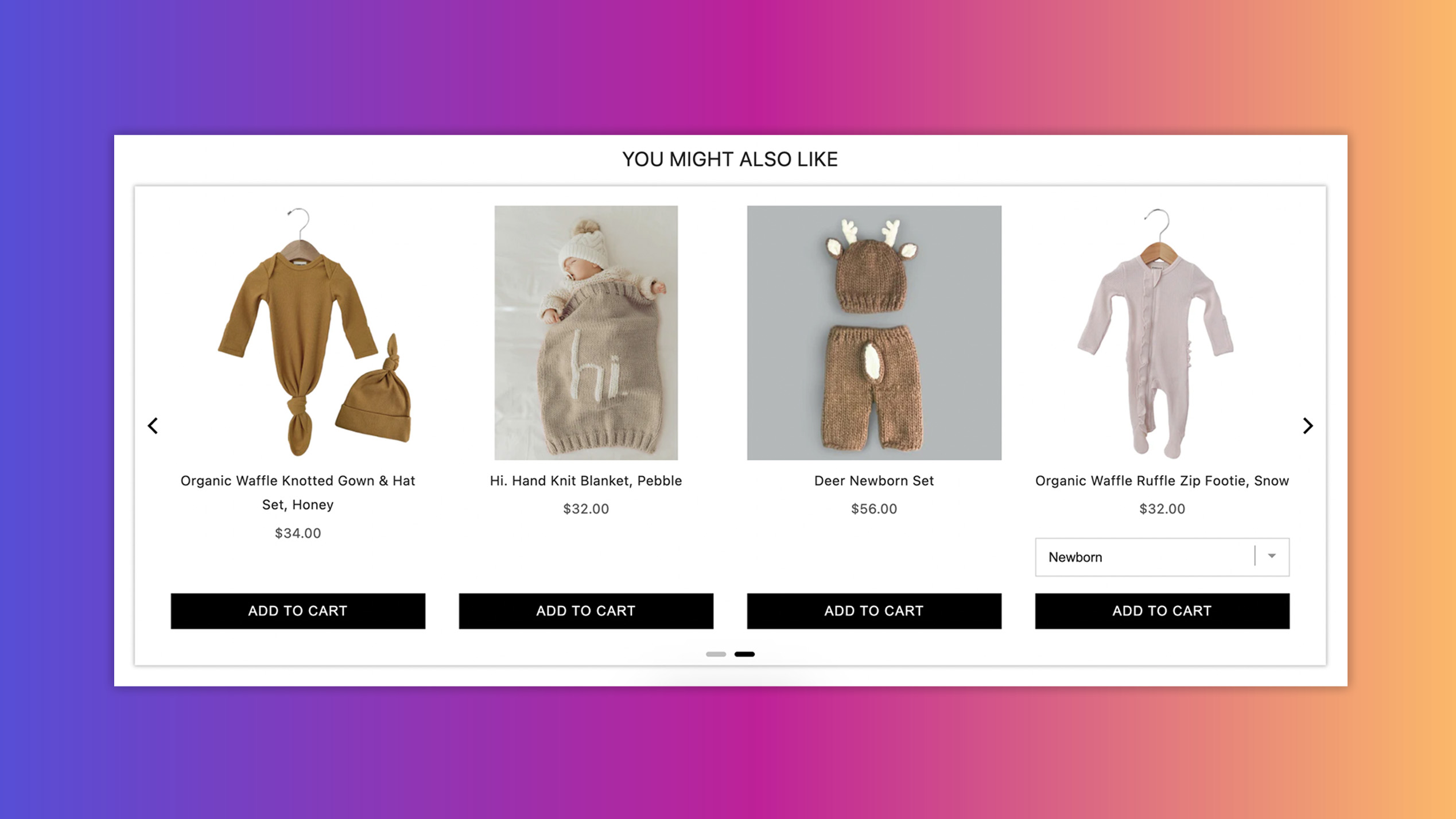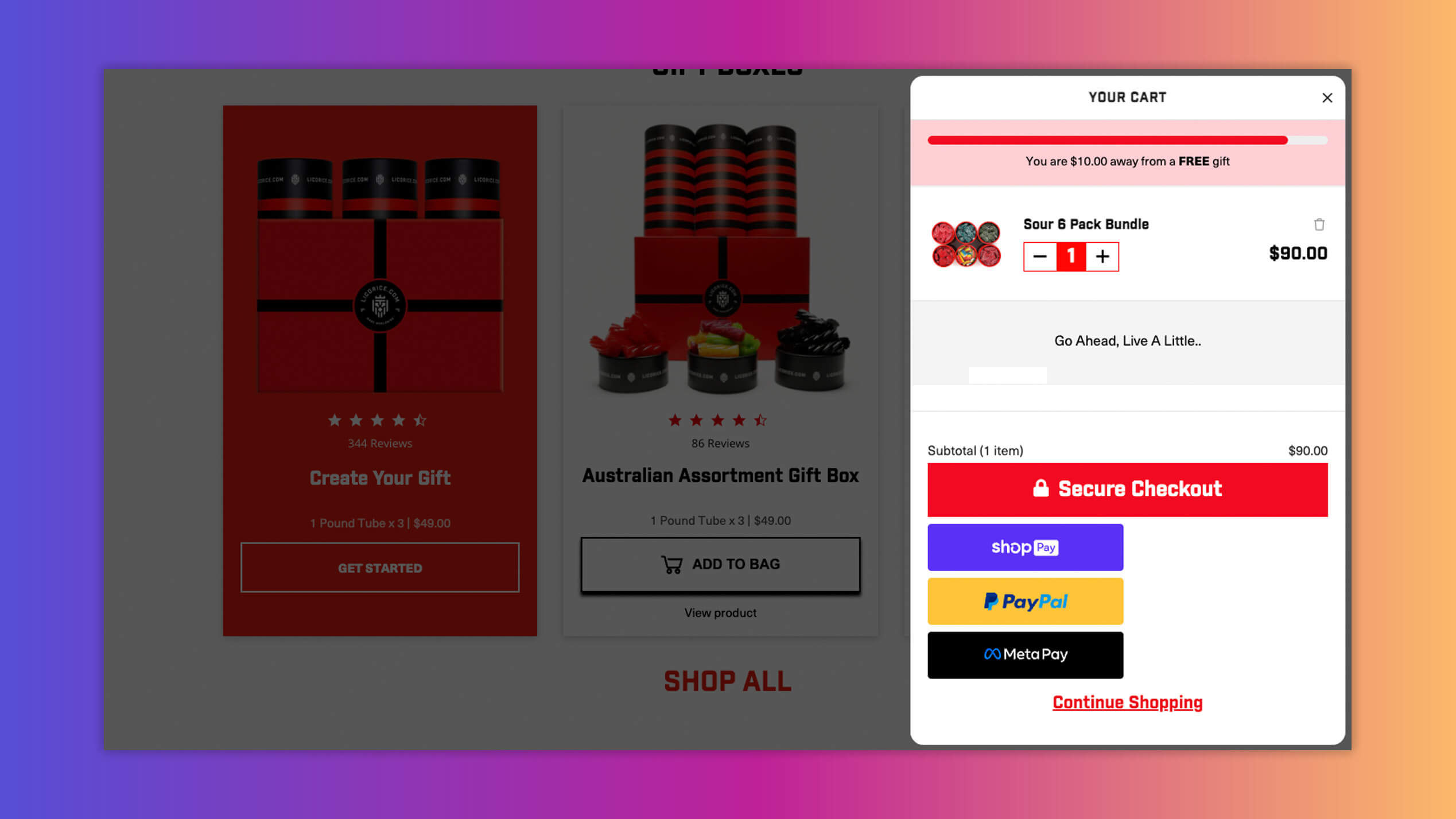-
Ecommerce brands use smart merchandising to increase customer loyalty, boost sales and revenue, and reduce costs by analyzing customer behavior, preferences, and trends to make informed decisions about product placement, pricing, and promotions.
-
Apply smart merchandising to your shop by personalizing the customer experience and using predictive analytics and visual merchandising.
Question...
What’s the key to driving sales on your ecommerce site?
Answer: It’s a little something called smart merchandising. And it’s a real game-changer that can boost your online profits.
Smart merchandising gives retailers the ability to create a better online shopping experience. It helps to personalize the customer journey and forecast future demand. If you’re not using smart merchandising yet for your business, you better get cracking! Every ecommerce marketer should have this tool in their toolkit.
Keep reading to learn what smart merchandising is, the benefits it offers, and how to use it to supercharge your ecommerce brand.
What Is Smart Merchandising?
Smart merchandising is like having a crystal ball. But instead of reading palms, it analyzes customer behavior, sales trends, and product performance. This data helps businesses make informed decisions about product placement, pricing, and promotions.
It takes online merchandising to the next level by helping shoppers find the right products at the right time. And when done right, it creates an extraordinary user experience that matches each customer’s unique needs and preferences.
What Are the Benefits of Smart Merchandising?
With smart merchandising, retailers can tap into the power of data-driven insights and automation. It’s like having a team of data scientists and robots working together to unlock the following benefits.
Better Customer Experience
Gone are the days of one-size-fits-all shopping experiences. Personalization is key to creating a shopping experience tailored to the individual customer.
Smart merchandising uses data and technology to analyze customer behavior, preferences, and trends. Then, it offers suggestions that match their interests. This means the products that customers see, the prices they pay, and the promotions they receive are all personalized.
Providing a tailored shopping experience for your customers helps build a greater connection with them. And a great connection with your customers leads to increased loyalty and repeat business.
Higher Sales and Revenue
In the ecommerce game, data-driven insights are the secret weapon that gives you an edge over the competition. By analyzing customer behavior and preferences, you can make savvy merchandising decisions about which products to promote and how to display them for maximum impact.
And what, exactly, do we mean by “maximum impact?” We mean increased customer engagement and satisfaction, higher conversion rates, and more sales revenue.
And let’s not forget the numbers — studies show that personalized marketing efforts can increase revenue by 10 to 15%.
Lower Business Costs
Smart merchandising helps you plan ahead by forecasting demand and adjusting inventory levels. By analyzing data, you learn how much inventory you need to keep in stock to meet customer demand. This reduces the need for excessive stockpiling and costly warehousing.
Smart merchandising also allows you to save money by uncovering the best price to charge for your products or services. You can do this by analyzing data about what customers are willing to pay, as well as what your competitors are charging. Then, you can determine the most effective pricing strategy to use. This can help you increase sales and revenue while also reducing costs.

How To Leverage Smart Merchandising for Your Ecommerce Brand
Fortunately, you don’t have to work hard to reap these benefits for your business — you just have to work smarter (pun intended) with these tips.
Personalize the Customer Experience
A staggering 71% of customers expect companies to cater to their unique needs and preferences. This means your business must prioritize personalization if you want to stay competitive. Here are three ways to incorporate personalization into your ecommerce merchandising strategy.
Serve up Product Recommendations
With the help of AI-powered product recommendation engines, you can analyze customer data and suggest products that perfectly match their interests and needs. From “Bestsellers” to “New Arrivals” and “Related Products,” you can use different product recommendation strategies for different stages of your customer’s buying journey.
For instance, Rebuy’s AI can work its magic by generating upsells and cross-sells based on recently viewed and purchased products, as well as products in the cart and custom properties.
SpearmintLOVE, a baby and kids clothing and accessories retailer, saw an impressive 11.07% increase in average order value after using Rebuy’s AI to cherry-pick the best recommendations for their customers.
Here’s a look at a recommendation cross-sell widget in action on the product detail page.

This data-driven recommendation widget helps customers fall in love with more of the thousands of products SpearmintLOVE has to offer.
Personalize Your Promotions
Promotions are an excellent way to incentivize customers to purchase items. And personalizing them can make them even more effective. By analyzing customer data, you can offer personalized promotions to each customer based on their interests, behavior, and purchase history. One way to do this is by offering free shipping to prevent customers from abandoning their carts. Or you can also offer a gift with purchase (GWP) to encourage additional purchases.
For example, Licorice.com, a provider of artisanal gourmet licorice, added a ‘free shipping’ bar to its Rebuy Smart Cart™ and used it to offer its customers a GWP. This was one of the tactics that led to a 17.16% lift in AOV!

Send in the Bots
Gartner predicts chatbots will become a “primary customer service channel” by 2027. And the global chatbot market is expected to hit $1.25 billion by 2025. Why are chatbots so popular?
They are available 24/7 to answer customer questions and resolve real-time issues. They can also analyze data on each customer’s past behavior and preferences. And then, armed with this data, they can provide personalized recommendations to customers. The result is an engaging and convenient customer experience.
If you have a Shopify store, then check out this guide with more information on how chatbots work and how to install them on your store. Neil Patel also has an in-depth guide that you can use for other ecommerce platforms.
Harness the Power of Predictive Analytics
Predictive analytics sounds like something from a sci-fi movie, but it’s actually a pretty simple concept. By using historical data and statistical algorithms, you can predict what your customers will do in the future. This means you can offer them products they’re more likely to buy and even prevent them from abandoning their shopping carts. Here are two ways you can use predictive analytics to boost your ecommerce business.
Improve Your Inventory Management
To be a successful ecommerce business, it’s important to keep track of the products you have in stock and what you might need to order more of. With predictive analytics tools, you can anticipate demand and potential stockouts. This helps reduce costs and improve supply chain management.
Using tools like Oracle NetSuite, SAP Integrated Business Planning, or IBM Planning Analytics, you can identify which products are likely to sell out quickly and take action to restock them before they run out.
For example, let’s say your ecommerce business sells consumer electronics online. With historical sales data, you can easily forecast future demand and adjust inventory levels accordingly. This way, you can ensure that you have just the right amount of stock on hand to meet your customers’ needs and avoid the dreaded “out of stock” message.
Dynamically Optimize Your Pricing Strategies
Another way that your ecommerce business can use predictive analytics is for dynamic pricing. This refers to the analysis of customer behavior, market trends, and competitor pricing to optimize and adjust prices in real time. Dynamic pricing helps your business remain competitive and maximize revenue and profits.
To do this, you can use AI-powered tools like Boardfy, Eversight, and Omnia Retail. These tools analyze customer purchase history, search patterns, and click stream data to identify which products are in high demand and which ones are not.
Based on these insights, you can adjust your prices in real time. For example, if a product is selling quickly, you may raise the price to take advantage of higher demand.
Alternatively, if you notice a competitor offering a lower price on a similar product, you may lower the price to remain competitive.
Leave a Strong Impression With Visual Merchandising
When it comes to online shopping, often, the only interaction customers will have with a product before deciding to buy is visual. So, that visual interaction has to leave a strong impression.
Visual merchandising is a way to enhance the appeal of products and create a more engaging shopping experience. Using visual cues such as high-quality product imagery, videos, and interactive displays can provide a more immersive and memorable experience for your customers.
With a tool like Hotjar, you can A/B test different visual merchandising strategies and measure their impact on key metrics. For example, you can track which product displays or placements get the most clicks, add-to-carts, and purchases. You can then use this data to optimize visual merchandising by testing different variations.
You can also analyze customer responses to different visual elements like color, layout, and product positioning and then identify patterns and correlations.
These insights can help you figure out what works best for different types of customers and products.
Work Smarter, Not Harder, With Rebuy
With the ecommerce industry booming, competition has never been fiercer. And with so many companies vying for attention, you better get smart about your merchandising.
With smart merchandising, you can differentiate yourself from competitors, boost product discovery, and drive revenue growth. But you’ll also need a smart tool to help you with your smart merchandising.
That’s where Rebuy comes in. Our truly flexible personalization platform allows you to merchandise your storefront any way you want. You can supercharge your online store by adding dynamic bundles, one-click subscriptions, intelligent product add-ons, Complete the Look widgets, and more..
There’s a reason why over 7,000 brands use Rebuy to boost AOV, drive conversions, and lift lifetime value (LTV). Start with a 21-day free trial and see the results for yourself.
Interested in partnering with Rebuy? Let's do it.
To keep up with the latest trends, platform updates, and more, follow us on LinkedIn.
